- Home
- Richard Dawkins
Climbing Mount Improbable Page 3
Climbing Mount Improbable Read online
Page 3
Figure 1.9 Animals with similar needs often resemble each other more than they resemble their closer relatives. The Algerian hedgehog, Erinaceus algirus (a), is a close cousin of the shrew hedgehog, Neotetracus sinensis (b). The greater hedgehog tenrec, Setifer setosus (c), is a close cousin of the long-tailed tenrec, Micngak melanorrachis (d). {20}
Figure 1.10 Convergent evolution: independently evolved streamlining: (a) Bottlenose dolphin, Tursiop truncatus; (b) Ichthyosaurus; (c) blue marlin, Makaira nigricans; and (d) Galapagos penguin, Spheniscus mendiculos. {21}
near the surface of the sea often converge on the same shape. It is the shape that engineers would recognize as streamlined. The picture shows a dolphin (mammal), an extinct ichthyosaur (which we can think of as the reptilian equivalent of a dolphin), a marlin (bony fish) and a penguin (bird). This kind of thing is called convergent evolution.
Apparent convergence is not always so meaningful. Those people — not all of them missionaries — that dignify face-to-face copulation as diagnostic of higher humanity may be charmed by the millipedes in Figure 1.11. If we call this convergence, it is probably not due to convergent needs: rather, there are only so many ways in which a male and a female can juxtapose their bodies, and there could be lots of reasons for hitting upon any one of them.
This brings us full circle to our opening topic of pure accident. There are some living things that resemble other objects but where the resemblance is probably not strong enough to be anything other than accidental. The bleeding heart pigeon has a tuft of red feathers, so placed as to create the illusion of a mortal wound to the breast, but the resemblance is unlikely to mean anything. Equally accidental is the coco-de-mer's resemblance to a woman's loins (Figure 1.12a).
Figure 1.11 Copulating millipedes, Cylindroilus punctatus, in missionary position. {22}
Figure 1.12a Accidental resemblances in nature: coco-de-mer.
As in the case of the Kennedy profile in the cliff, the reason for feeling that these resemblances are coincidence is statistical. The pigeons bleeding heart amounts only to a gash of red feathers. The coco-de-mer s apparent ‘mimicry’ is admittedly impressive. It involves two or three features, not just one. It even has a suggestion of pubic hair. But the human brain works hard and actively seeks resemblances, especially to parts of our bodies that we find particularly interesting. I suspect that this is going on in our perception of the coco-de-mer, just as it is in our recognition of the Kennedy hillside.
The same goes for the death's-head hawk moth (Figure 1.12b). Indeed our brain has an almost indecent eagerness to see faces, which is the basis of one of the most striking illusions known to psychologists. If you get an ordinary face mask from a fancy dress shop and hold it up, hollow side facing another person (with a background that makes the eye holes conspicuous), the viewer is likely to see it standing {23}
Figure 1.12b Accidental resemblances in nature: death's-head hawk moth, Acherontia atropos.
out as a solid face. This has a very odd consequence which you'll discover if you gently rotate the mask from side to side. Remember that the viewer's brain ‘thinks’ it is a solid face, but the object is actually a hollow mask. When the hollow mask moves to the left, the only way to reconcile the eyes’ report with the brains presumption that the face is solid is to suppose that it moves in the opposite direction. And this is exactly the illusion that the viewer will see. The face will appear to be rotating in a direction opposite to the actual direction of rotation.
So it seems quite likely that the death's-head hawk moth resembles a face by accident. I should add, however, that one of our most respected evolutionary theorists, Robert Trivers, now of Rutgers University, New Jersey, believes that face mimicry on the backs of insects can be an adaptation to scare would-be predators such as birds (we think of the face on the moth as a human skull, but it could equally be a monkey's face). He could well be right, in which case I should have placed the example under my ‘designoid’ {24} heading. For a different reason, the same may be true of another apparent face mimic, the Japanese samurai crab. This crab has on its back a likeness (not, I have to say, a stunningly impressive likeness) of the fierce features of a samurai warrior. The suggestion has been made that over the centuries Japanese fishermen, abetted by the human brains natural eagerness to see faces, have noticed a slight resemblance to a face on the backs of some individual crabs. For reasons of superstition or respect, fishermen did not wish to kill crabs with a human-like face (maybe especially a samurai-like face), so they threw them back into the sea instead. Many a crab's life was saved, according to this theory, by its humanoid face, and those crabs with the most pronounced human features in any one generation contributed a disproportionate share of offspring to the next generation. Later generations therefore had a head start over earlier ones, and the resemblance gradually increased.
When we were discussing how to acquire a stone knife simply by finding it, we agreed that you could ‘make’ a sharp knife by examining all the stones in the world and discarding the blunt ones — the great majority. If you searched enough screes and quarries, you'd surely find a stone with not only a keen blade but a convenient handle as well. It is only a partial oversimplification to say that the pharmaceutical industry works by examining lots of molecules generated at hazard and then testing the efficacy of the minority that seem promising. But we agreed that finding, as a method of acquiring a useful implement, was supremely inefficient. Far better to take a suitable material like stone or steel and hone it or sculpt it by design. Yet this is not how designoid objects — living things bearing the illusion of design — are made. Living things come about ultimately by a process that is rather more like ‘finding’, but it is different from pure finding in a very significant respect.
It may seem an odd fact to notice of a stone, but I'll mention it anyway and follow where it leads. A stone does not have children. If stones had children like themselves, those children would inherit from their parents the attribute of having children. This implies grandchildren and greatgrandchildren for unspecified generations. A farfetched speculation it might be thought and, in any case, so what? To {25} answer this, turn to something whose sharpness may be equally inadvertent but which does have offspring.
The hard, strap-like leaves of some reeds have quite sharp edges. This sharpness is probably an incidental by-product of other properties of the leaf. You can cut yourself on a reed, enough to annoy but not enough for the sharpness to provoke suspicion of design. No doubt some leaves are sharper than others and you could search the lakeshore for the sharpest reed you could find. Now here is where we part company with stones. Don't just cut with your reed knife, breed from it. Or breed from the same plant from which you plucked it. Allow the sharpest plants to cross-pollinate, kill the blunt plants: it doesn't matter how you do it, just see to it that the sharpest plants do most of the breeding. Not once, but generation after generation. As the generations pass you'll notice that there are still bluntish reeds and sharpish reeds around, but the average reed will become steadily sharper. After 100 generations you'd probably have bred something that would give you a decent close shave. If you bred for rigidity at the same time as breeding for keenness of edge, you could eventually cut your throat with a broken reed.
In a sense you have done no more than find the quality you seek: no carving, whittling, moulding or whetstone grinding, just finding the best of what is already there. Sharp leaves have been found, blunt leaves have been discarded. It is like the story of finding sharp stones but with one significant addition: the process is cumulative. Stones don't breed whereas leaves, or rather the plants that make leaves, do. Having found the best blade of a generation you don't simply use it until it wears out. You ratchet your gain by breeding from it, transmitting its virtue to the future where it can be built upon. This process is cumulative and never-ending. You are still only finding and finding, but because genetics enables cumulative gain the best specimen you can find in a late generation is better than the
best you can find in an earlier generation. This, as we shall see in Chapter 3, is what Climbing Mount Improbable means.
The steadily sharpening reed was an invention to make a point. There are, of course, real examples of the same principle at work. All the plants in Figure 1.13 are derived from one wild species, the wild {26}
Figure 1.13 All these vegetables have been bred from the same ancestor, the wild cabbage, Brassica olearacea. (clockwise from top left) Brussels sprout, kohlrabi, Swedish turnip, drumhead cabbage, cauliflower and golden savoy. {27}
cabbage, Brassica oleracea. It is a rather nondescript plant which doesn't look much like a cabbage. Humans have taken this wild plant and, over a short period of centuries, shaped it into these really very different kinds of food plants. It is a similar story with dogs (Figure 1.14).
Although hybrids between dogs and jackals and between dogs and coyotes do occur, it is now accepted by most authorities that all breeds of domestic dogs are descended from a wolf ancestor (top left) who lived maybe a few thousand years ago. It is as though we humans had taken wolf flesh and shaped it like a clay pot. But we didn't, of course, literally knead and press wolf flesh into the shape of, say, a whippet or a dachshund. We did it by cumulative finding, or, as it is more conventionally put, selective breeding or artificial selection. Whippet-breeders found individuals that looked a little bit more whippet-like than the average. They bred from them, and then found the most whippet-like individuals of the next generation, and so on. Of course it wouldn't have been so relentlessly simple as that, and the breeders wouldn't have had the concept of a modern whippet in their heads as a distant target. Perhaps they just liked the look of the physical characteristics that we would now recognize as whippet-like, or perhaps those visible qualities came along as a by-product of breeding for something else, like proficiency in hunting rabbits. But whippets and dachshunds, Great Danes and bulldogs, were made by a process that resembled finding more than it resembled clay-modelling. Yet it still is not the same as pure finding, because it is cumulative over generations. That is why I call it cumulative finding.
Accidental objects are simply found. Designed objects aren't found at all, they are shaped, moulded, kneaded, assembled, put together, carved: in one way or another the individual object is pushed into shape. Designoid objects are cumulatively found, either by humans as in the case of domestic dogs and cabbages, or by nature in the case of, say, sharks. The fact of heredity sees to it that the accidental improvements found in each generation are accumulated over many generations. At the end of many generations of cumulative finding, a designoid object is produced which may make us gasp with admiration at the perfection of its apparent design. But it is not real design, because it has been arrived at by a completely different process. {28}
It would be nice to be able to demonstrate this process whenever we wish. Dog generation times are a little shorter than ours but, even so, it takes more than a human lifetime to propel dog evolution to any notable extent. Humans have bred chihuahuas in about a ten-thousandth of the time it took nature to breed wolves from their chihuahua-sized (though not chihuahua-shaped), insectivorous ancestors who lived back when the dinosaurs died out. Even so, artificial selection of real, living creatures — at least creatures bigger than bacteria — is too slow to make an impressive demonstration for impatient and short-lived humans. You can speed the process no end with a computer. Computers, whatever their faults, are blindingly fast, and they can simulate anything that can be precisely defined, which includes reproductive processes like those of animals and plants. If you simulate heredity, that most basic condition for life, and provide for occasional random mutation, it is truly startling what carl evolve before your eyes in a few hundred generations of selective breeding. I pioneered this approach in my book The Blind Watchmaker, using a computer program of the same name. With this program you can breed, by artificial selection, creatures called computer biomorphs.
Computer biomorphs are all bred from a common ancestor that looks like this ; in very much the same sense as all the breeds of dogs were bred from a wolf. Litters of progeny with random ‘genetic mutations’ appeared on the computer screen and a human chose which member of each litter to breed from. This needs some explanation. First, what does it mean to speak of ‘progeny’, of ‘genes’, and of ‘mutations’ in the case of these computer objects? All biomorphs have the same kind of ‘embryology’. They are basically built as a branching tree, or a segmental series of such trees joined up to one another. Details of the tree(s), such as how many branches there are, and the lengths and angles of the various branches, are controlled by ‘genes’ which are just numbers in the computer. Genes in real trees, like genes in us and genes in bacteria, are coded messages written in the language of DNA. The DNA is copied from generation to generation with great, though not perfect, fidelity. Within each generation, the DNA is ‘read out’ and has an influence on the shape of the animal or plant. Figure 1.15 shows how, in real trees and in computer biomorph trees, changes in just a few {30}
Figure 1.15 Real trees and computer biomorph trees to show how varieties of the same species can vary in shape because of quite minor changes in growth rules. Several species of tree have a weeping variety and several species have converged upon the skypointmg, ‘Lombardy’ form. {31}
genes can alter the shape of the whole plant by changing the programmed rules of growth as each new twig is budded off. Biomorph genes are not made of DNA but this difference is trivial for our purposes. DNA is digitally coded information just like numbers in a computer, and numerical ‘genes’ pass down the generations of biomorphs in the same kind of way as DNA passes down generations of plants or animals.
When a biomorph has a child, the child inherits all the genes of its parent (it only has the one parent, for there is no sex), but with some possibility of random mutation. A mutation is a slight random increase or decrease in the numerical value of a gene. So a child might be like its parent but with a slightly steeper angle to one of its branches because the numerical value of its Gene 6 has increased from 20 to 21. When in biomorph breeding mode, the computer draws a biomorph in the centre of the screen, surrounded by a litter of randomly mutated offspring. Because their genes have changed only slightly, the offspring always bear a family resemblance to the parent, and to each other, but they often display slight differences that the human eye can detect. Using the computer mouse, a human chooses one of the screenful of biomorphs for ‘breeding’. The screen goes blank except for the chosen biomorph, which glides to the parental slot at the centre of the screen and then ‘spawns’ a new litter of mutant offspring around itself. As generations go by, the selector can guide evolution in very much the same way as humans guided the evolution of domestic dogs, but much faster. One of the things that surprised me when I first wrote the program was how quickly you could evolve away from the original tree shape. I found that I could home in on an ‘insect’ or a ‘flower’, a ‘bat’, a ‘spider’ or a ‘spitfire’. Each one of the biomorphs in Figure 1.16 is the end product of hundreds of generations of breeding by artificial selection. Because the creatures breed in a computer, you can whistle through many generations of evolution in a matter of minutes. A few minutes of playing with this program on a modern, fast computer gives you a hands-on, vivid feeling for how Darwinian selection works. The biomorphs in the safari park of Figure 1.16 seem to me to resemble wasps, butterflies, spiders, scorpions, flatworms, lice, and other ‘creatures’ that look vaguely {32}
Figure 1.16 Safari park of black-and-white biomorphs, bred with the ‘Blind Watchmaker’ computer program.
biological even if they don't resemble particular species on this planet. Yet all are cousins of the trees among which they stand, and of the squadron of ‘spitfires’ in the top right corner. They are pretty close cousins, at that. All have the same number of genes (sixteen). They differ only in the numerically coded values of those genes. You could go from any creature in the safari park to any other, or to any of tril
lions of other biomorphs, simply by selective breeding.
The most recent version of the program can breed biomorphs that vary also in colour. It is based on the old program but it has a more {33} elaborate ‘embryology’ and new genes controlling the colour of tree branches. There are also new genes determining whether each branch of the tree is a line or a rectangle or an oval, whether the shape concerned is filled or empty, and how thickly the lines are painted. When using the colour program I find myself following evolutionary alleys not towards insects and scorpions but towards flowers and the sort of abstract patterns that might look good on wallpaper or bathroom tiles (Figure 1.17). My wife, Lalla Ward, has embroidered four of these biomorphs as chair covers, taking precisely one needlepoint stitch for each computer pixel.
Biomorphs are ‘artificially selected’ by a human chooser. In this respect they are like cabbages or pedigree dogs. But artificial selection requires a human chooser and is not the main subject of this book. Following Darwin himself, I am using artificial selection as a model for a different process: natural selection. Finally, the time has come to speak of natural selection itself. Natural selection is like artificial selection, but without the human chooser. Instead of a human deciding which offspring shall die and which shall reproduce, nature ‘decides’. The quotation marks are vital because nature doesn't consciously decide. This might seem too obvious to emphasize, but you'd be surprised by the number of people who think natural selection implies some kind of personal choice. They couldn't be more wrong. It just is the case that some offspring are more likely to die while others have what it takes to survive and reproduce. Therefore, as the generations go by, the average, typical creature in the population becomes ever better at the arts of surviving and reproducing. Ever better, I should specify, when measured against some absolute standard. Not necessarily more effective in practice because survival is continually menaced by other creatures who are also evolving and perfecting their arts. A species may get progressively better at the art of avoiding predators but, since predators are concurrently getting better at the art of catching prey, there may be no net gain. This kind of ‘evolutionary arms race’ is interesting, but we are jumping ahead of ourselves.

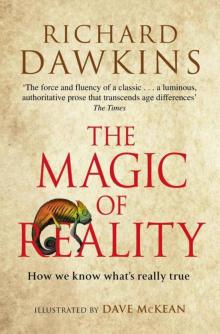 The Magic of Reality
The Magic of Reality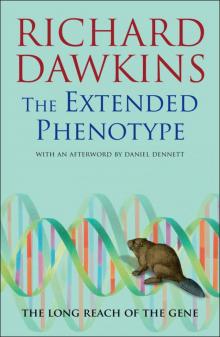 The Extended Phenotype
The Extended Phenotype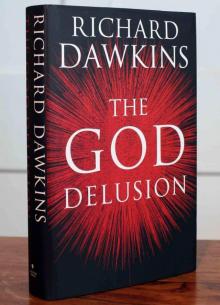 The God Delusion
The God Delusion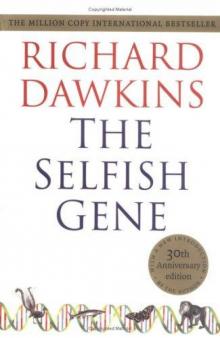 The Selfish Gene
The Selfish Gene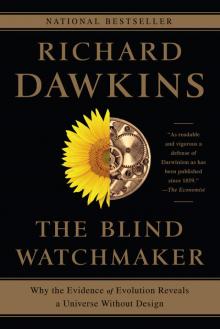 The Blind Watchmaker
The Blind Watchmaker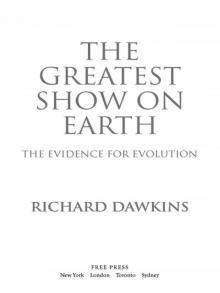 The Greatest Show on Earth
The Greatest Show on Earth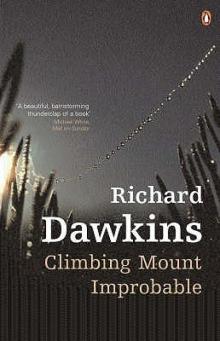 Climbing Mount Improbable
Climbing Mount Improbable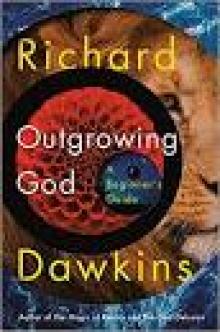 Outgrowing God
Outgrowing God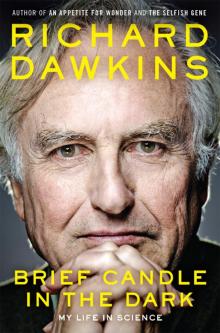 Brief Candle in the Dark
Brief Candle in the Dark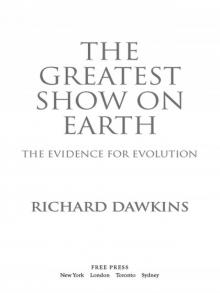 The Greatest Show on Earth: The Evidence for Evolution
The Greatest Show on Earth: The Evidence for Evolution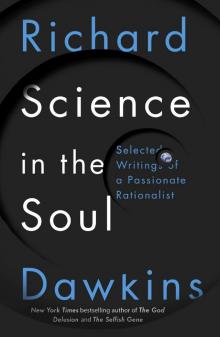 Science in the Soul
Science in the Soul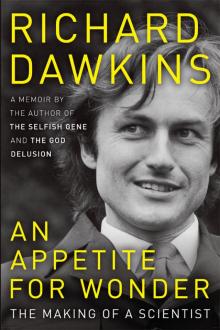 An Appetite for Wonder
An Appetite for Wonder